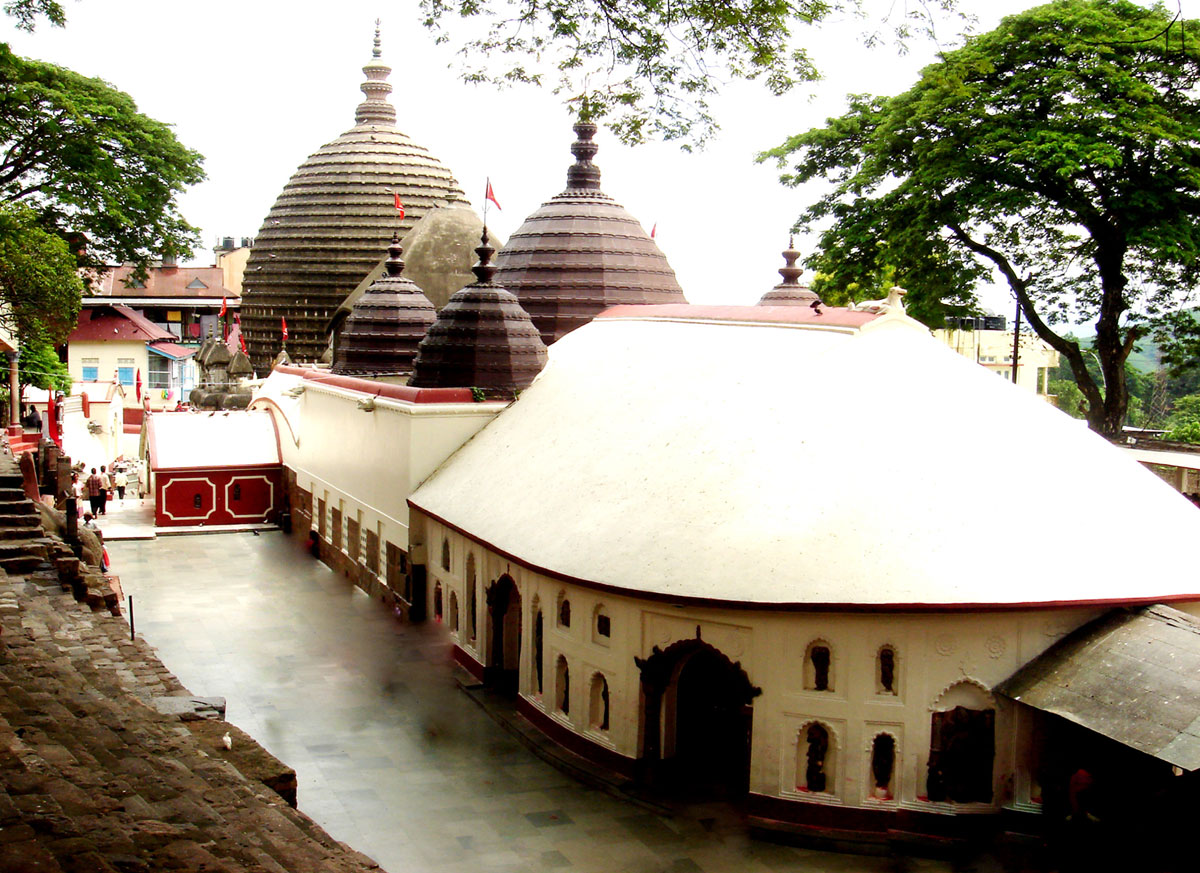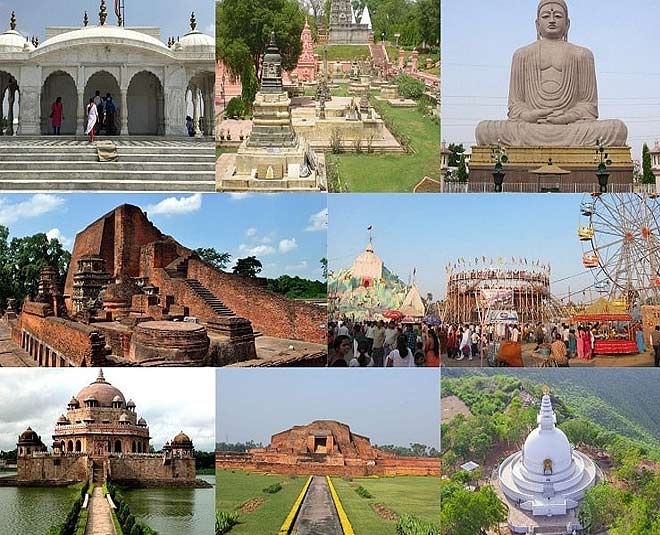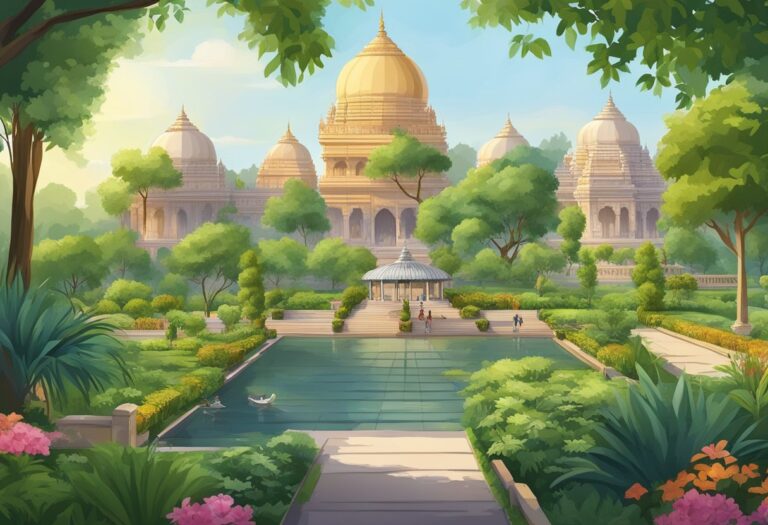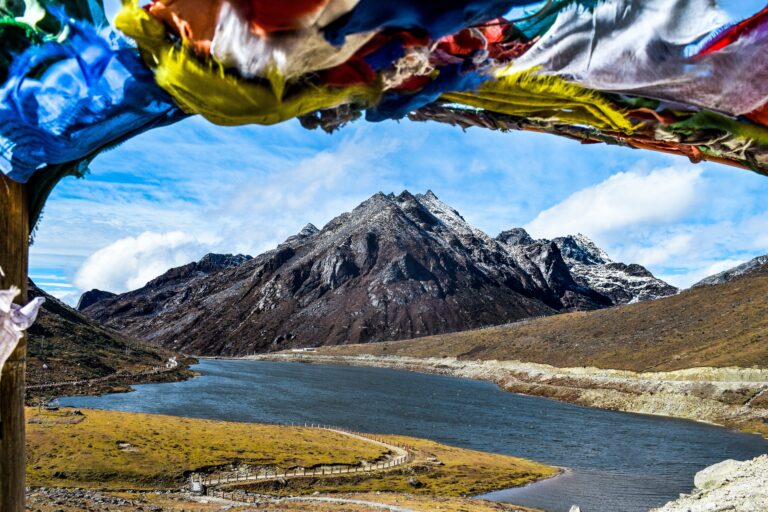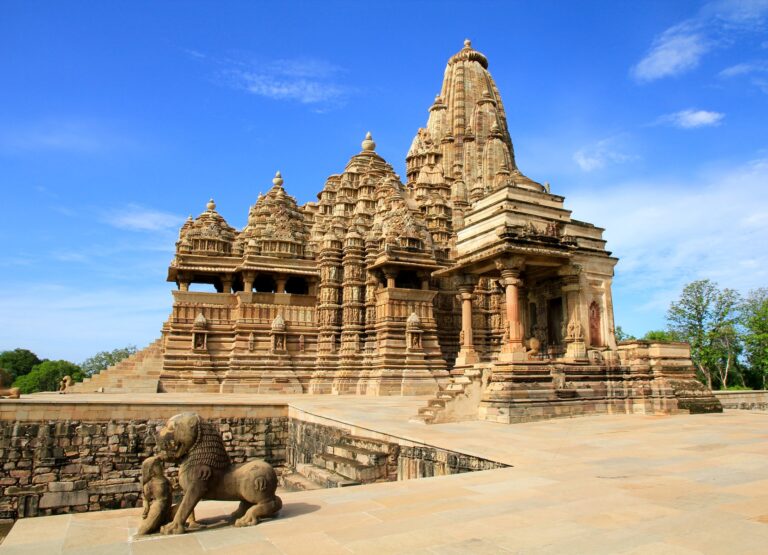Kamakhya Temple History: One of India’s Most Sacred Sites
Kamakhya Temple, located in the city of Guwahati, Assam, India, is a significant pilgrimage site for devotees of the Hindu goddess Kamakhya. The temple, built in the 8th century, is one of the oldest Shakti Pithas, religious shrines dedicated to Shaktism, and is known for its unique worship of the yoni, the symbol of the goddess’s creative power.
The Kamakhya Temple history is rooted in the ancient mythology of the Hindu religion. According to legend, when Lord Shiva was carrying the corpse of his wife Sati, her yoni fell to the ground at the site where the temple now stands. The temple was later built by King Naranarayana of the Koch dynasty in the 16th century, and it has since been patronized by various dynasties, including the Palas and the Ahoms.

Today, Kamakhya Temple is an important center of pilgrimage for devotees of Shaktism, attracting thousands of visitors each year. The temple complex consists of several chambers, including the garbhagriha, which houses the yoni, and is known for its unique architectural features, including the intricate carvings on the temple walls. The temple is also home to several festivals and rituals throughout the year, including the Ambubachi Mela, which celebrates the goddess’s menstruation.
Key Takeaways
- Kamakhya Temple is one of the oldest Shakti Pithas, religious shrines dedicated to Shaktism, and is known for its unique worship of the yoni, the symbol of the goddess’s creative power.
- The temple has a rich history rooted in ancient mythology and has been patronized by various dynasties throughout the centuries.
- Kamakhya Temple is an important center of pilgrimage for devotees of Shaktism and is known for its unique architectural features, festivals, and rituals.
History of Kamakhya Temple
The Kamakhya Temple is one of the most revered and ancient temples in India, located on the Nilachal Hill in Guwahati, Assam. It is believed to be the most important of the 51 Shakti Peethas, where the yoni of Goddess Sati fell. The temple has a long and rich history that dates back to the 8th century.
According to the Kalika Purana, the Kamakhya Temple was built by Lord Shiva himself and was dedicated to his consort, Goddess Kamakhya. The temple was later destroyed by the Mlechchha dynasty of Kamarupa, and it was rebuilt by the Koch dynasty in the 16th century.
The Kamakhya Temple is a unique temple as it is the only temple where the primary worship is of the yoni, which is represented by a natural stone. The temple is also home to the Mahavidyas, the ten goddesses who are considered to be the incarnations of Goddess Kamakhya. The Mahavidyas include Matangi, Bhairavi, Tara, Bagalamukhi, and Dhumavati.
Over the centuries, the Kamakhya Temple has been patronized by various rulers and kings, including the Palas, the Kochs, and the Ahoms. The Ahom kings were great patrons of the temple, and they made significant contributions to the temple’s architecture and art.
The Kamakhya Temple has also been associated with various legends and myths. According to one legend, Goddess Kamakhya menstruates every year during the Ambubachi Mela, and the temple remains closed for three days. It is believed that during this time, the mother goddess Kamakhya undergoes her annual fertility cycle.
In conclusion, the Kamakhya Temple is a significant pilgrimage site for devotees of the Shakta tradition. The temple’s rich history, association with various deities and legends, and unique worship of the yoni make it a fascinating and awe-inspiring place to visit.
Architectural Features
The Kamakhya Temple is a unique blend of Hindu and indigenous architectural styles. The temple is built on a hill called Nilachal, which is believed to be the site of a rock fissure that represents the yoni or female genitalia of the goddess. The temple has undergone several renovations and additions over the centuries, resulting in a complex structure with multiple chambers and shrines.
The temple follows the Nilachal type of temple architecture, which is characterized by a beehive-shaped shikhara or tower. The shikhara is made of stone and is adorned with intricate sculptures of Hindu gods and goddesses. The temple also has an atchala or eight-angled roof, which is made of brick and covered with terracotta tiles.
The temple consists of three major chambers, with the garbhagriha or sanctum sanctorum being the most important. The garbhagriha houses the main deity, Kamakhya Devi, who is represented by a stone yoni covered with a red cloth. The yoni is surrounded by a silver serpent, which is believed to represent the kundalini or life force.
The temple is also known for its exquisite sculptures, which depict various Hindu deities and mythological scenes. The sculptures are made of stone and are intricately carved with great attention to detail. The temple also has several smaller shrines dedicated to other deities, which are located in different parts of the complex.
In conclusion, the Kamakhya Temple is a unique and fascinating example of Indian temple architecture. Its blend of Hindu and indigenous styles, intricate sculptures, and complex structure make it a must-visit destination for anyone interested in history and architecture.
Religious Significance
The Kamakhya Temple is a significant pilgrimage site for Hindus, Buddhists, and practitioners of various streams of Tantrism. The temple is dedicated to the goddess Kamakhya, who is believed to be the embodiment of Shakti, the divine feminine energy. The temple is one of the 51 Shakti Peethas, which are considered to be the most sacred shrines of the goddess.
Devotees worship the goddess for prosperity and well-being. Many believe that the goddess fulfills their wishes at the temple. The temple is particularly famous for its Ambubachi Mela, a four-day festival that celebrates the menstruation of the goddess. During this festival, the temple is closed for three days, and on the fourth day, the temple is reopened, and the devotees receive the blessings of the goddess.
The temple’s primary worship is of the aniconic yoni, set in natural stone, which represents the goddess’s fertility. The temple complex also houses ten Mahavidyas or ten aspects of the goddess, including Matangi, Rati, Tara, Bhairavi, and Dhumavati. The temple is also home to shrines dedicated to Lord Shiva, Ganesha, and Vishnu.
The Kamakhya Temple is believed to be the place where the goddess Sati’s yoni (the vagina) fell after her self-immolation. The temple’s name comes from the combination of two words, “Kama” and “Khya,” which mean desire and place of worship, respectively. The temple is also known as the “Yoni Peetha,” as it is believed to be the place where the goddess’s yoni fell.
In Hinduism, the goddess Kamakhya is considered to be the mother goddess, and her worship is an integral part of the Shakta tradition. The temple is also associated with the goddess Kali and Tripura Sundari. The temple’s tantric practices are believed to be powerful, and many pilgrims come to seek the blessings of the mother goddess Kamakhya.
In conclusion, the Kamakhya Temple is a significant religious site that attracts devotees from all over the world. The temple’s association with the goddess Kamakhya and other deities makes it a unique place of worship. The temple’s tantric practices and association with fertility and menstruation make it a symbol of the divine feminine.
Festivals and Rituals
The Kamakhya Temple is famous for its unique system of different modes of Shakti puja, rituals, and festivals. The temple complex reflects the very essence of its beauty and creativity, as well as the lyrical and rhythmic style of the system and tradition.
One of the most significant festivals celebrated at the Kamakhya Temple is the Ambubachi Mela. This festival celebrates the annual menstruation of the Mother Goddess during the onset of the monsoon, typically in late June. The temple closes for three days, and on the fourth day, it reopens with great fanfare. Thousands of devotees from all over the country visit the temple during this festival to seek the blessings of the Goddess.
Another important festival celebrated at the Kamakhya Temple is Durga Puja. This festival is celebrated with great enthusiasm and devotion by the pilgrims who visit the temple. The temple is beautifully decorated with flowers, and the devotees offer prayers and perform various rituals to seek the blessings of the Goddess.
The Kamakhya Temple also has a unique tradition of Sati. It is believed that the temple is one of the Shakti Peethas, where the body parts of Sati, the first wife of Lord Shiva, fell after her death. Therefore, the temple is considered a sacred place for the devotees of Lord Shiva and Goddess Parvati.
Apart from these festivals, the Kamakhya Temple also celebrates various other rituals and puja throughout the year. The monsoon season is considered an auspicious time to visit the temple, and many pilgrims visit the temple during this time to seek the blessings of the Goddess.
In conclusion, the Kamakhya Temple is a beautiful and sacred place with great religious and cultural significance. The festivals and rituals celebrated at the temple are an integral part of its tradition and reflect the devotion and faith of the pilgrims who visit the temple.
Accessibility and Tourism
Kamakhya Temple is located in the Nilachal Hill in Guwahati, Assam, India. The temple is easily accessible by taxi, rail, and road. The nearest railway station is in Guwahati, Assam, which is well-connected to other parts of India. The temple is also easily accessible by road, and there are regular bus services from Guwahati to the temple.
Tourists from all over the world visit Kamakhya Temple to experience the unique blend of history, culture, and spirituality. The temple is a popular tourist destination and attracts a large number of visitors every year. The temple is open to visitors from 8:00 AM to 1:00 PM and from 2:30 PM to 5:30 PM every day.
The temple is situated on the banks of the Brahmaputra River, which adds to its scenic beauty. The temple complex is spread over a large area and has several smaller temples within it. Visitors can explore the various temples and learn about their history and significance.
As Kamakhya Temple is a religious site, visitors are expected to dress modestly and behave respectfully. Photography is not allowed inside the temple complex. Visitors are also advised to remove their shoes before entering the temple.
In conclusion, Kamakhya Temple is a must-visit destination for anyone interested in history, culture, and spirituality. The temple is easily accessible by taxi, rail, and road, and is a popular tourist destination. Visitors can explore the various temples within the complex and learn about their history and significance.
Administration and Governance
The Kamakhya Temple has had a long and complex history of administration and governance. The temple was originally under the control of the Koch dynasty, who built the temple before the 10th century. Over time, various rulers and kings have had a hand in the temple’s administration.
In July 2015, the Supreme Court of India transferred the administration of the temple from the Kamakhya Debutter Board to the Bordeuri Samaj. This decision was made after a long-standing dispute over the temple’s management. The Bordeuri Samaj is a non-profit organization that works to preserve and promote the cultural heritage of Assam.
The temple is currently managed by a committee of trustees appointed by the Bordeuri Samaj. The committee is responsible for the day-to-day administration of the temple, including the management of funds and the maintenance of the temple complex.
The temple has four chambers from the top, namely garbhagriha, calanta, pancharatna, and the nritya-mandapa. The garbhagriha is the sanctum sanctorum of the temple, where the main deity, Goddess Kamakhya, is worshipped. The calanta is the antechamber, while the pancharatna is the main temple structure. The nritya-mandapa is the dance hall.
During the reign of Hussein Shah, the temple was destroyed and rebuilt several times. However, the temple has survived these challenges and continues to be an important pilgrimage site for devotees of Goddess Kamakhya.
Frequently Asked Questions
What is the History of Kamakhya Temple?
The history of Kamakhya Temple is obscure and intertwined with mythology and legends. According to Hindu beliefs, the temple was created when Goddess Parvati ordered Lord Shiva to build a shrine for her so that she could meditate in peace until she found a suitable husband for herself. The temple is believed to be one of the oldest of the Shakti Pithas, or religious shrines dedicated to Shaktism.
What is the mystery surrounding Kamakhya Temple?
One of the mysteries surrounding Kamakhya Temple is the presence of a natural spring inside the temple that turns red during the annual Ambubachi Mela. It is believed that the red color symbolizes the menstrual cycle of Goddess Kamakhya. Another mystery is the absence of an idol of the goddess in the temple. Instead, the temple houses a yoni-shaped stone that represents the goddess.
Who built the Kamakhya Temple?
The Kamakhya Temple is believed to have been built by the Koch dynasty in the 16th century. However, the temple’s history dates back to ancient times, and there is no clear evidence of who built the original temple.
Why is Maa Kamakhya Temple famous?
The Maa Kamakhya Temple is famous for its unique religious tradition and the annual Ambubachi Mela, which is celebrated during the monsoon season. The temple is also one of the 51 Shakti Pithas, which are considered to be the most sacred places for worshipers of the goddess Shakti.
What is the Kamakhya Temple Story?
The story of Kamakhya Temple is intertwined with Hindu mythology and legends. According to one legend, the temple was built on the spot where Lord Shiva danced with the corpse of his wife, Sati. Another legend states that the temple was built to commemorate the victory of the goddess Kamakhya over the demon king Narakasura.
Who revealed the Kamakhya Temple?
There is no clear evidence of who revealed the Kamakhya Temple. However, the temple has been a place of worship for centuries and is considered to be one of the holiest shrines in India.

